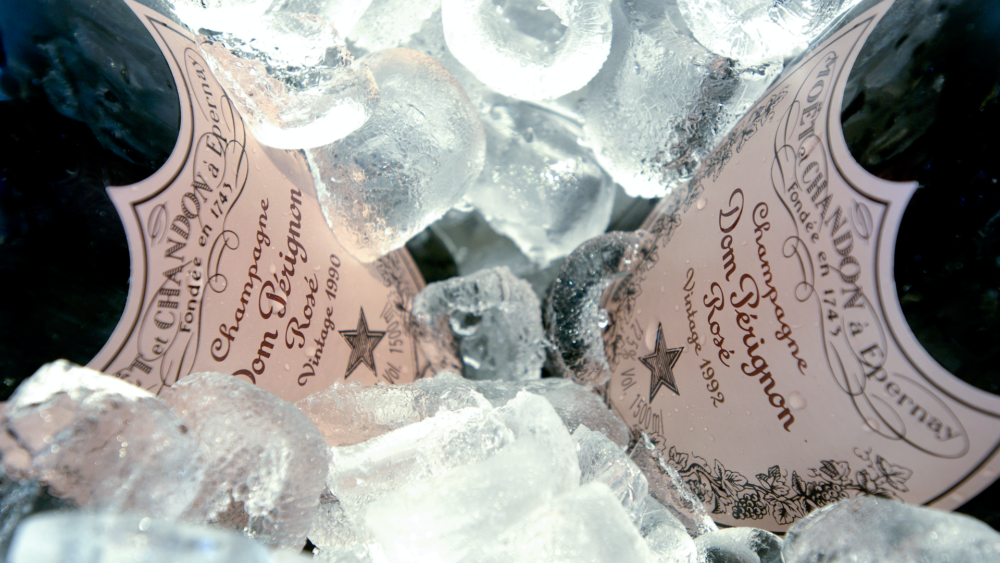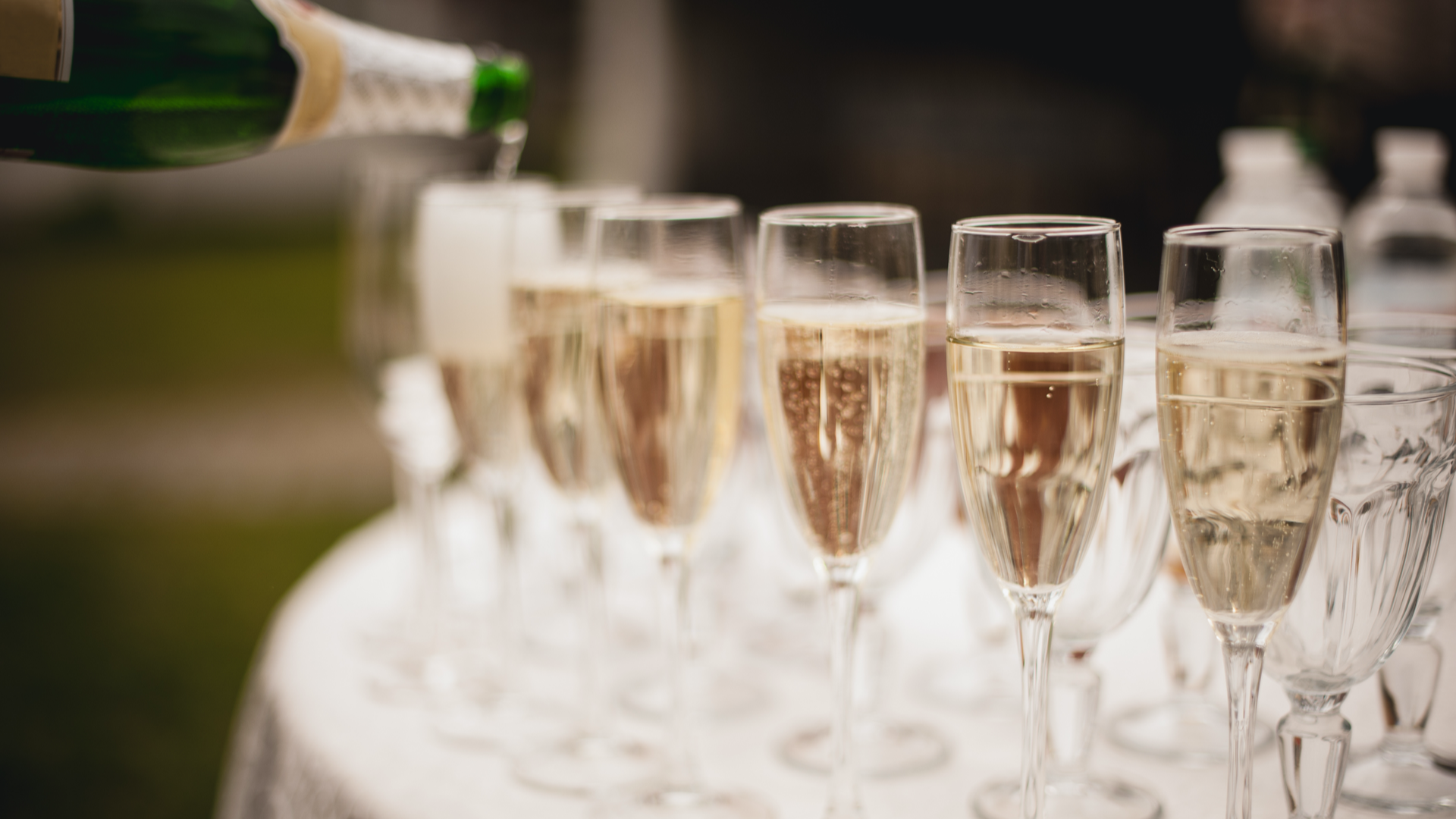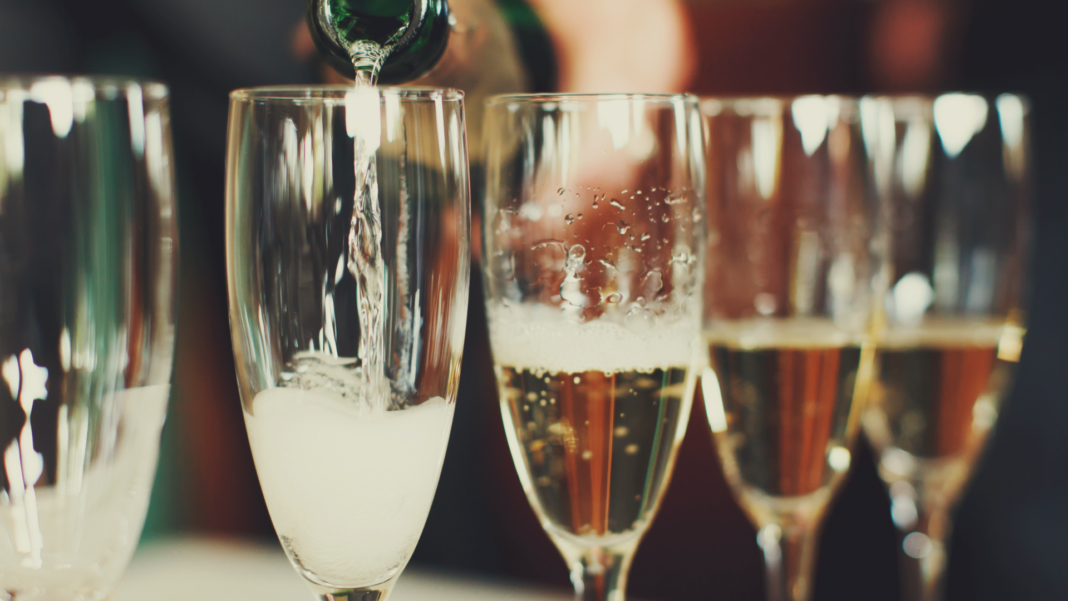“I only drink champagne on two occasions, when I’m in love and when I’m not.”
-Coco Chanel
There’s nothing like the sound of uncorking a bottle of champagne. This fabulous and romantic bubbly has been associated with royalty back to the 17th century. To quote Dom Perignon, “Come quickly, I am tasting the stars.”
Dom Perignon, a Benedictine Monk, was the cellar master at The Abbey of Hautsvillers, France. Around 1670, he developed the process of blending various wines to create champagne and discovered the method of keeping bottles from exploding by utilizing thicker glass. He also introduced the utilization of cork, instead of wood, which he would tie with string soaked in oil to keep the champagne fresh.

True champagne is only grown, fermented, and bottled in the cool and wet climate of Champagne, France with seven specific types of grapes. These grapes are: Pinot Noir, Pinot Meunier, Chardonnay, Pinot Blanc, Pinot Gris, Petit Meslier and Arbane.
It’s no surprise that 20% of all bubbly is sold in the month of December, when the world is celebrating the holidays. It is the ultimate and perfect libation to honor and observe and has a reputation unlike any other.
But, life is a celebration. So, why not drink bubbly year round?
As I explained in my first article in this series, I spent time in Spain as a child and learned from early age the importance of wine with dinner.
Champagne pairs beautifully with many, many foods, including:
-
Shellfish, especially oysters
-
Soft cheeses, such as Brie
-
Smoked salmon
-
Foie gras
How To Serve Champagne

The wine should be well-chilled and served ideally between 45 and 50 degrees F. The shape of the flute is important in that tall and narrow glasses serve to carry the bubbles smoothly over the palate.
The Difference between Champagne and Sparkling Wine
There is a difference between Champagne and Sparkling Wine. As mentioned above, true Champagne is only from the 100 mile radius around the region of Champagne, France. Sparkling wines undergo a second fermentation process to produce the Co2 to create carbonation.
One of the most common sparkling wines is Italian Prosecco. Proseccos are generally dry, crispy and affordable and often used for Mimosas.
Prosecco pairs well with:
-
Antipasto
-
Sushi
-
Shrimp cocktail
-
Melon
Cava is a Spanish sparkling wine made mostly from white grapes. This is also affordable and works well with:
-
Fried foods
-
Strong cheeses
-
Sushi
-
Prosciutto
The French sparkling wine is called Cremant and is produced outside of Champagne, in the region of Burgundy. These wines are available in dry and sweet, and rose varieties. They pair well with:
-
Seafood
-
Salmon
-
Dishes with a light cream sauce
Whether it’s a true Champagne or a Sparkling Wine, one should always have a bottle tucked away in the refrigerator- just in case. You never know when there will be a reason to celebrate.
I taught my children well. One of my daughters recently called me and asked me to join her on her porch for some champagne… just because it was a beautiful day.
Stay tuned for my next article on American sparkling wines…


